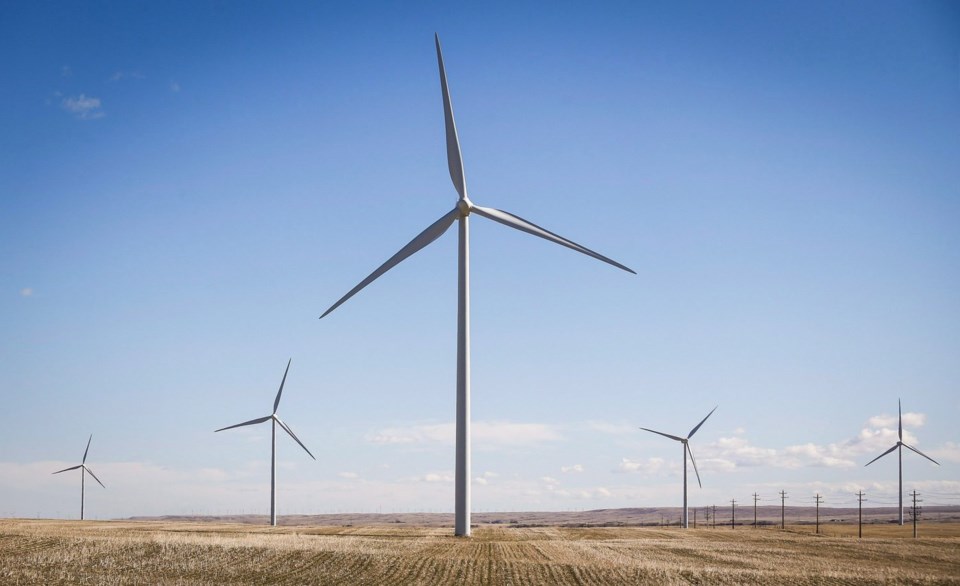EDMONTON, ALBERTA, CANADA — The Alberta government is proposing additional restrictions on wind and solar farms that conservationists think are more about limiting renewable energy than protecting the environment.
Last year the Alberta government imposed a seven-month moratorium on new renewable energy projects, after which Premier Danielle Smith announced her government would be taking an "agriculture first" approach to regulating renewable energy project locations.
That approach includes preventing renewable energy projects from being within 35 kilometres of "pristine viewscapes" and parks and protected areas, and a near total ban where soil conditions are prime for yielding crops.
“We need to ensure that we’re not sacrificing our future agricultural yields, or tourism dollars, or breathtaking viewscapes to rush renewables developments,” Smith said at the time.
Critics of the sudden moratorium and new renewable energy-only restrictions, such as Alberta Wildnerness Association conservationist Ruiping Luo, have said that the United Conservative government is being heavy-handed.
"It seems very clear that this is not about environmental protection," said Luo.
Back in February Smith also said the government was planning to go beyond viewscapes and cropland and would consider imposing further restrictions related to Alberta's native grassland areas and irrigated and irrigable land.
A first look at what those grassland and irrigated land restrictions could be was made available when the government asked some municipalities, industry officials, and landowners for input this summer.
According to a webinar used in that engagement process, Alberta is looking to prohibit wind and solar farms on irrigated land.
Land that could be irrigable could also be prohibited, though an analysis would be done before a decision is made.
That same webinar also shows Alberta is considering prohibiting renewable energy facilities from being erected on most grassland areas.
Luo, in a report last month, calculated that these new potential restrictions, on top of those announced by Smith earlier this year, could rule out almost 40 per cent of the province for renewable energy.
The viewscape buffer zone alone rules out close to 23 per cent of Alberta, Luo calculated.
For Luo and the Alberta Wilderness Association, protecting grassland and parks and even irrigated land is a good idea in theory, but she says the government's restrictions won't be effective unless applied across the entire energy industry.
"For a lot of these conditions, renewable energy isn't the greatest threat," Luo said.
For example, she said oil and gas extraction in Alberta's southeast has a much more detrimental effect on Prairie grasslands than renewable energy projects like wind or solar farms.
"I think the restrictions start off from ideas that would be good and that would be beneficial environmentally, but the way they're applied doesn't make sense from a science perspective," she said.
"We would especially agree with protecting native Prairie not just from renewable energy, but from all developments... because so much has been lost."
Luo said she's sent both her report and a letter to the Alberta government outlining her concerns about the new potential restrictions, but has yet to receive a response.
Jason Wang, a senior electricity analyst with the clean energy think tank the Pembina Institute agreed with Luo, and said if Alberta wants to protect grasslands and agriculture lands then restrictions like these would need to be applied across the energy sector, rather than solely on renewables.
"It feels very elementary to say, but these sectors aren't being treated in the same way," Wang said.
In August Wang and the Pembina Institute published a report analyzing the aftermath of the government's seven-month moratorium, and found that 53 wind and solar projects were abandoned after the announcement.
Those projects, on paper, had a combined energy generation capacity of 8,600 megawatts, which would be enough to power every home in Alberta. However, there was no guarantee that every project would have been approved based on existing regulations by the Alberta Utilities Commission, the agency responsible for regulating the development of energy projects.
In an email, Ashley Stevenson, the press secretary for Alberta's Utilities Minister Nathan Neudorf, said that the renewable energy restrictions are designed with environmental protection in mind.
"These new rules ensure responsible land use, protecting the environment, Albertans’ property rights, Alberta’s beautiful landscapes, and the best agricultural industry in the world," Stevenson said.
"Our government is focused on putting Albertans first, not industrial power projects."
Stevenson said the government's full suite of regulatory changes is still being developed, but the government is on track to have the policies finalized before the end of 2024.
This report by The Canadian Press was first published Oct. 11, 2024.
Jack Farrell, The Canadian Press



